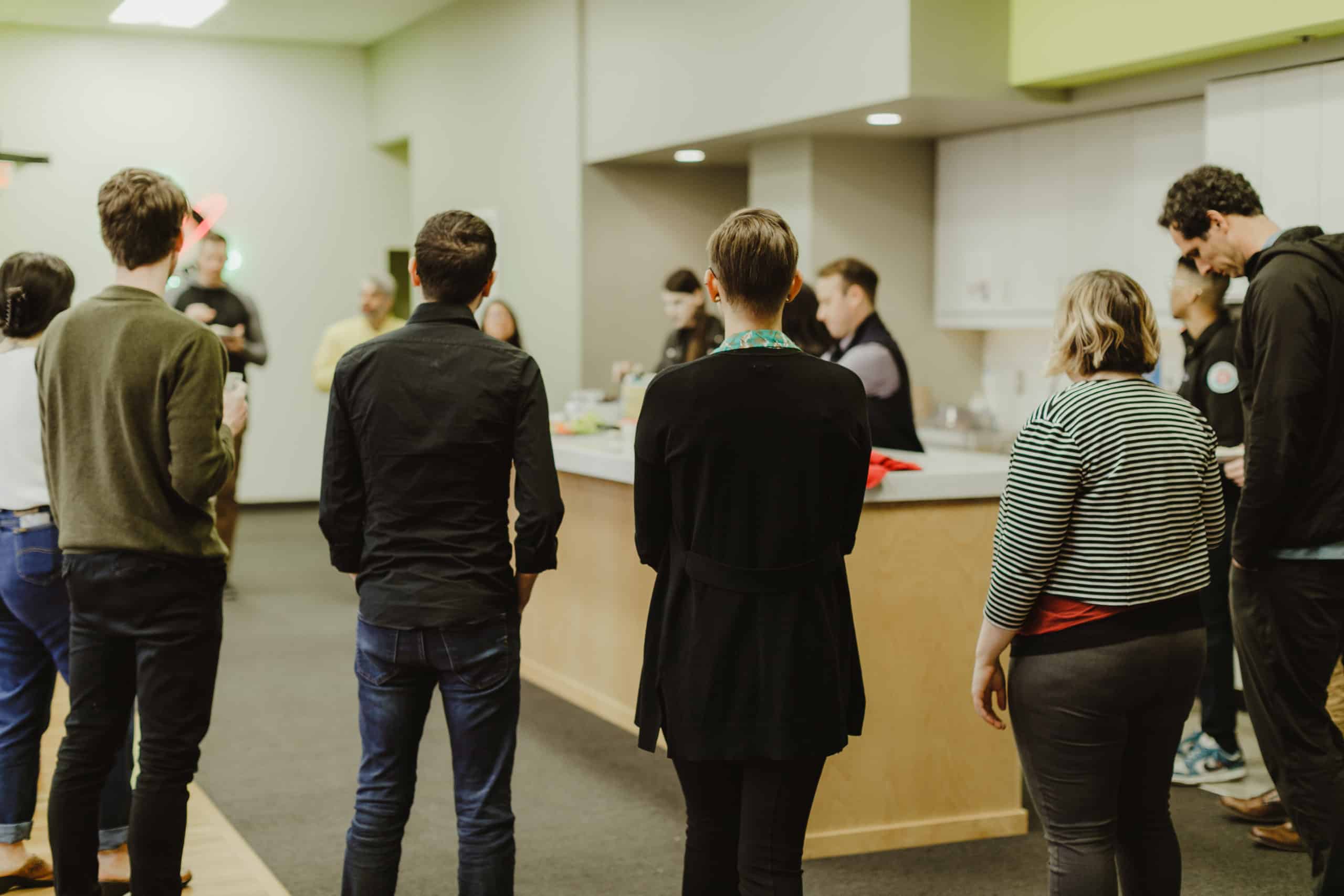Have you ever found yourself in a meeting where you are sharing out round-robin style and the team is struggling to keep track of who is next? There might be awkward silence or the crunch of multiple people jumping in at the same time only to do the “No, you first” dance. Ultimately, time is lost trying to figure out who goes next. For daily standups, it can be particularly important to gain back these few seconds, especially when there are lots of people attending.
Over the last several months, one of the project teams I am on has grown from five to 10 people. Sizing up a team has many challenges, including keeping the flow of standup moving. We jumped from eight to 10 Zoom panels. Comically, we found ourselves struggling to know who went next. If this describes your team too, here is a compilation of ideas for how to help teams manage.
If you aren’t familiar with or need a refresher on standups, I’d suggest reading the first half of Dylan’s recent post, Rethinking Agile, Part 2 – The Stand Down Meeting.
Set Order
For a bit of added context, early on when there were six of us in a hybrid standup, we normed on popcorning to the next person. This way, we kept it interesting and reduced the awkward transition of waiting for the next person to hop in. One way of efficiently running standups is to create a set order so folks know when to go.
Pros: For teams that like predictability or are less apt to jump in, this can be great. It also reduces the “No, you first” dance that often happens when folks are expected to jump in randomly.
Cons: This can get tricky when folks are out of office. Also, for those like myself, having the same order every day can get stale.
Tip: Put the order in your meeting invite so folks can reference this if needed.
Zoom Specific
Self Tracking
Did you know you can move the tiles around in Zoom?! I just learned this recently. This is more of a personal hack, but it’s also something the whole team could do individually. I enjoy making a bit of a game out of shuffling the arrangement in front of me as a way of keeping track of who has gone.
Pros: Keeps things interesting and requires engagement as you wait your turn.
Cons: Can be distracting.
Host determines the order
This is similar to the suggestion of setting an order but adds some randomness to the process. In this method, the tiles on the host’s view determine the order for everyone in the meeting. For steps on how to do this, see the link here.
Pros: Team can easily track who goes when. Reduces decision-making.
Con: The host has to set the order every time. For those who don’t like frequent change, this might not be the preferred method.
Raised Hands
Google Meet offers a hand-raising option that can be useful for knowing who has left to go. But did you know that Zoom also has this feature? With Meet, it’s a bit more obvious, but to use this feature in Zoom, here are the shortcuts:
- Windows: Alt+Y
- Mac: Option+Y
Pros: Easily allows folks to know who is left while allowing for spontaneity.
Cons: For those who don’t like frequent change, this might not be their preferred method. Also, folks have to remember to lower their hand, which is sometimes harder than you’d expect.
Give it Time
This was the approach our team took. After about two weeks, the team more or less made it through each standup without much pause to ask who hadn’t shared yet. We tossed around some of the above ideas but our brains got familiar enough with each other that we haven’t implemented anything new.
Pros: Keeps things organic and flexible for when folks are out or if someone is joining a bit late.
Cons: Things can feel a little uncomfortable while folks settle in. There is also the occasional lag toward the end as we get down to the last few people.
Final Thoughts on Staundups for Large Teams
Ultimately, the goal is to efficiently make use of the time during standups. Trimming down transition time can be one way to help with that. What method works best for your team will likely depend on the references of those attending standup. Consider how much your team likes consistency versus spontaneity. Not sure what to pick? Ask your team and retro later on what folks think of the new method.

